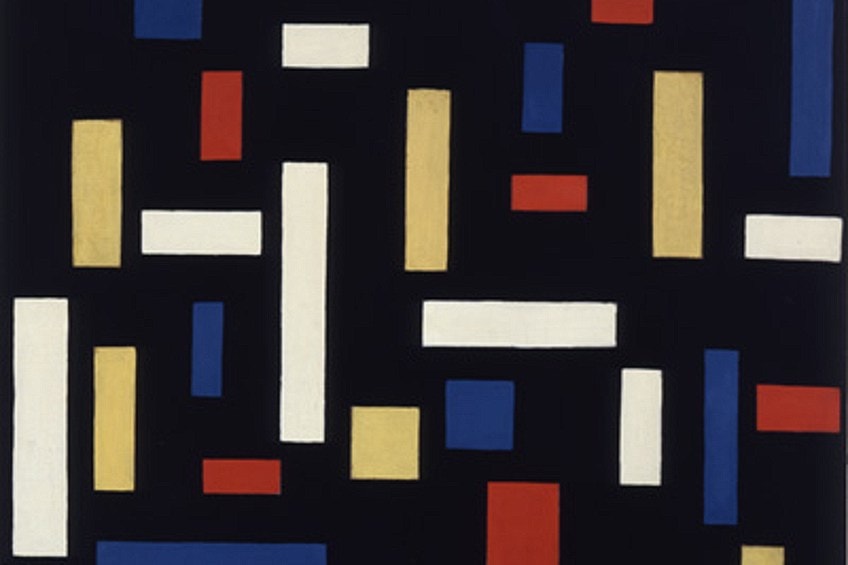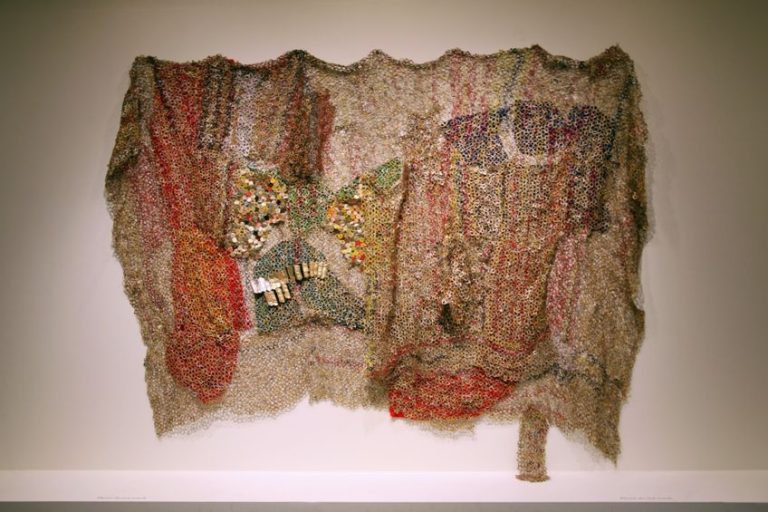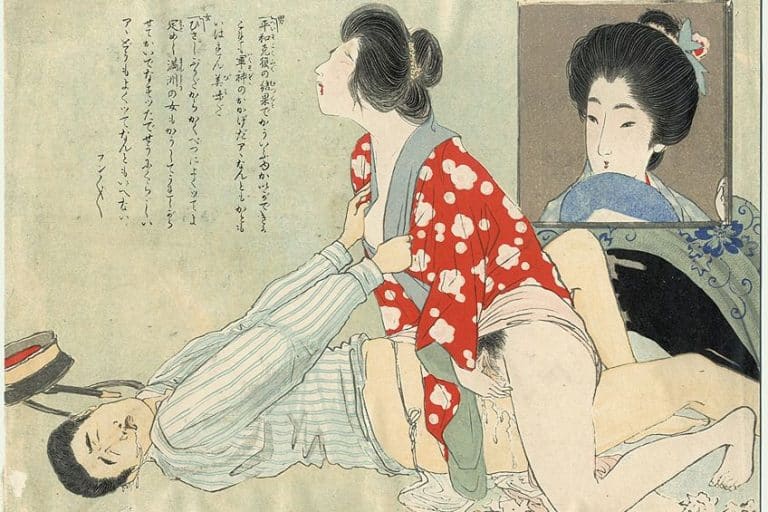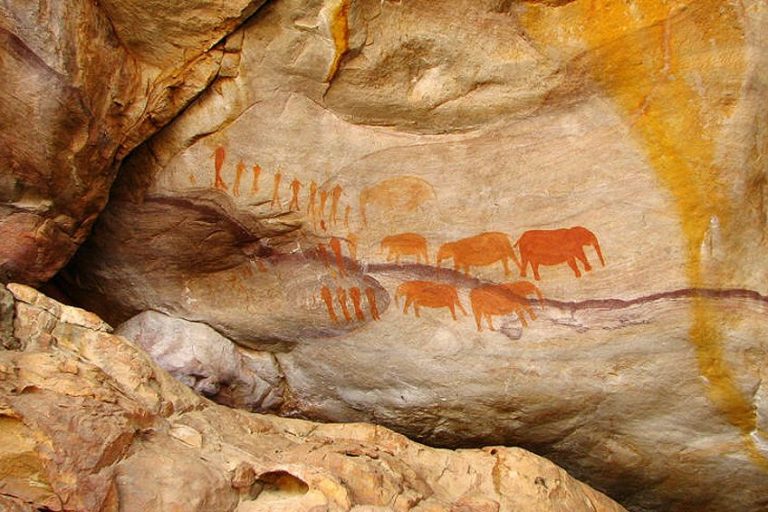Neoplasticism – An Essential Look at Neoplasticism Art
Plastic Arts was a term given to certain art mediums that involved molding or manipulating the material to create a representation of objects, such as sculpture, ceramics, and other visual arts such as painting. Neoplasticism translates to “new art” and was a movement that sought to steer away from the plasticity of the past. The idea was to strip away the superfluous layers of a painting and express a visual message with only the most essential elements.
What Is Neoplasticism Art?
In 1910, the first painting to fully embrace the Abstract style was created by Wassily Kandinsky. Many artists of the time such as Kandinsky were becoming less interested in creating depictions of everyday objects that were viewed through their eyes and sought to express something deeper within themselves and discover the universal essence of a piece through the process of abstraction. He had no desire to create anything that resembled the real world and his artworks contain a large variety of abstract forms, lines, and colors.
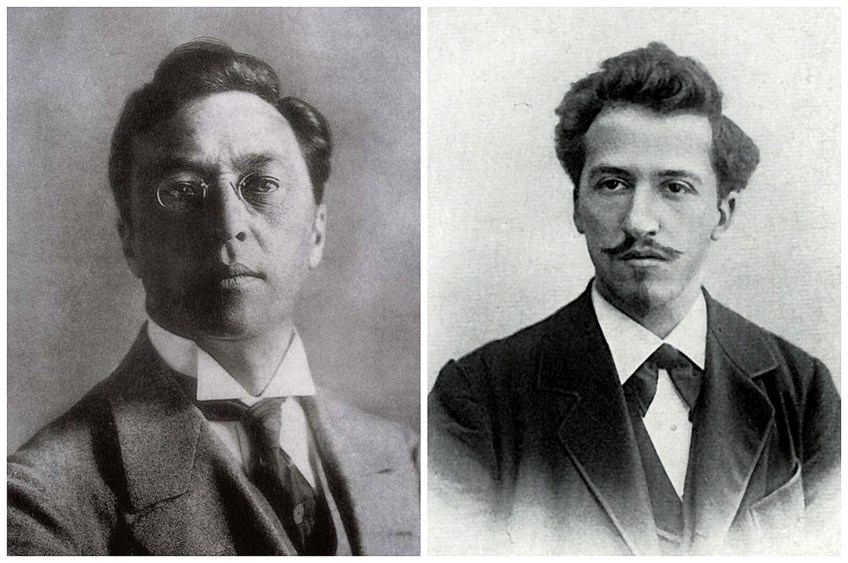
Anonymous Unknown author, Public domain, via Wikimedia Commons
Piet Mondrian was known to enjoy Kandinsky’s artworks and agreed that abstraction was a useful tool for expressing more sublime and spiritual concepts. He wanted to create art that wasn’t bound by the need to portray objects like previous art forms. Yet, unlike Kandinsky, he felt that there should be certain limitations as to the scope of elements used in a piece. He believed that only the most essential elements should be used, and his desire was to find unity and harmony in his compositions through discovering the relationship between shape, forms, lines, and colors.
Mondrian was the first Neoplasticism artist to delineate the Neoplasticism art definition and he is also credited with coining the term.
A Brief History of Neoplasticism Art
In 1917 the periodical art journal De Stijl was created by Neoplasticism artists Piet Mondrian, Bart van der Leck, Theo van Doesburg, and Vilmos Huszar. It was in this journal that Mondrian would convey his theories about the new art style that would reject the portrayal of reality as perceived through the eyes and focus on creating a new visual language that was restricted to only the most essential elements of art, such as primary colors, straight lines, and neutral tones such as grey, white, and black. Over the course of the first eleven issues of the journal, Mondrian had periodically inserted segments from his essay Neo-Plasticism in Pictorial Art.
Due to his massive contribution in the early days of the publication, Mondrian’s work became synonymous with the De Stijl movement’s style.
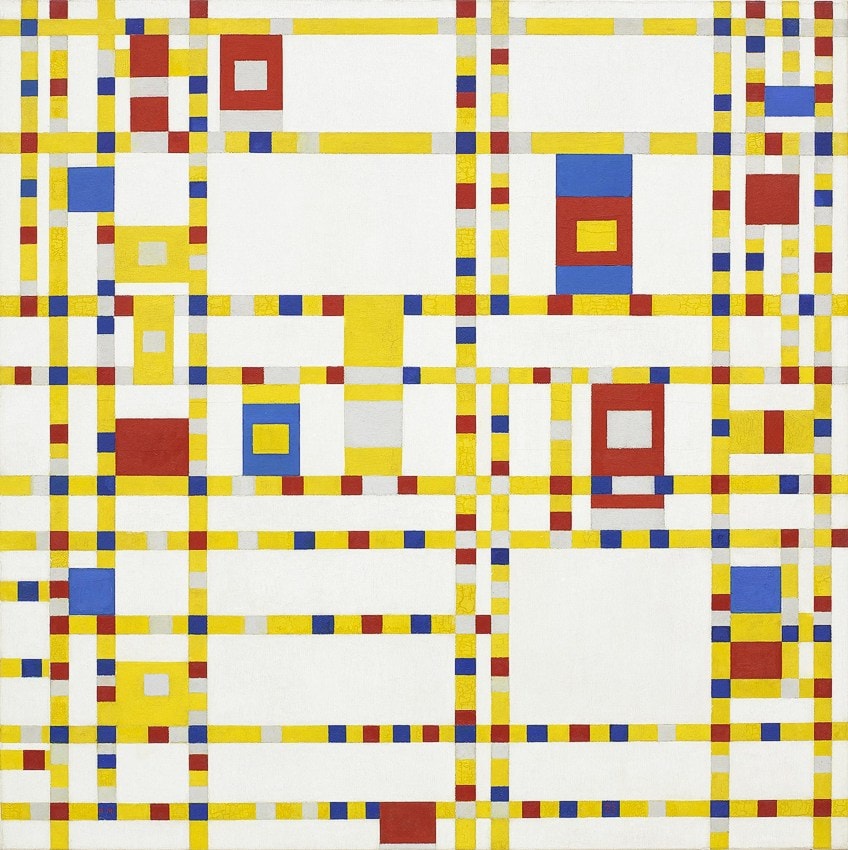
Yet it would later embody the ideas formulated by the truly most prominent member of the movement, Theo van Doesburg. Around 1921, Modiran’s absolutism grew to be disfavored by van Doesburg, who started adding acute angles and diagonal lines to his work, a diluted form of Neoplasticism that was arising known as Elementarism.
Mondrian took great offense to this breach of the De Stijl movement’s manifesto, which they had all signed and agreed to. Mondrian contributed nothing further to the movement and left the group for good in 1924.
However, Mondrian’s contributions were extremely important to the foundational development of the movement. Indeed, through the publication, he was able to spread his ideas of an art form that was not limited by perceived reality, but one that allowed for the temporary nature of one moment to be expressed in the most essential language, allowing for the viewer to see into the infinite moments that exist within harmonious universal forms.
Neoplasticism Art Characteristics
By setting certain limitations to the process of abstraction, Neoplasticism artists sought to create pure and new art forms. Simple vertical and horizontal lines were considered to be intrinsically harmonious. This new art was to be created within the confines of a set of fundamental principles:
- The natural forms of the real world were to be discarded and geometric shapes were exclusively to be used.
- Rectangular areas and straight lines were to be the main elements of the composition.
- Circles, diagonals, and curves were not allowed to be used.
- Only neutrals such as black, grey, and white and primary colors such as red, yellow and blue may be used.
- Asymmetry was encouraged, and Neoplasticism artists steered away from any representation of symmetry.
- Balance of composition was attained by the position of color and geometrical motifs.
- Bold colors additionally should be balanced out by the use of bold direct lines.

Famous Neoplasticism Artists
The most famous artists of Neoplasticism art arose from the De Stijl movement in the Netherlands between 1917 and 1931. This group included Piet Mondrian, Theo van Doesberg, and Bart van der Leck. Their contributions to the movement would help define, and in some cases, eventually, surpass the characteristics of the Neoplasticism art style.
Piet Mondrian (1872 – 1944)
| Nationality | Dutch |
| Date of Birth | 7 March 1872 |
| Lived In | Netherlands, Paris, London, New York |
| Associated Movements | De Stijl, Neoclassicism, Abstract art |
Piet Mondrian was born in Amersfoort in the Netherlands on the 7th of March 1872. Considered to be among the greatest artists of the previous century, this Dutch art theoretician and painter is most well known for being a pioneer of the Abstract art movement.
His style developed from initially creating figurative paintings to one that became increasingly more abstract over time, eventually reaching a level where his visual language had been reduced to the exclusive use of simple geometric shapes.
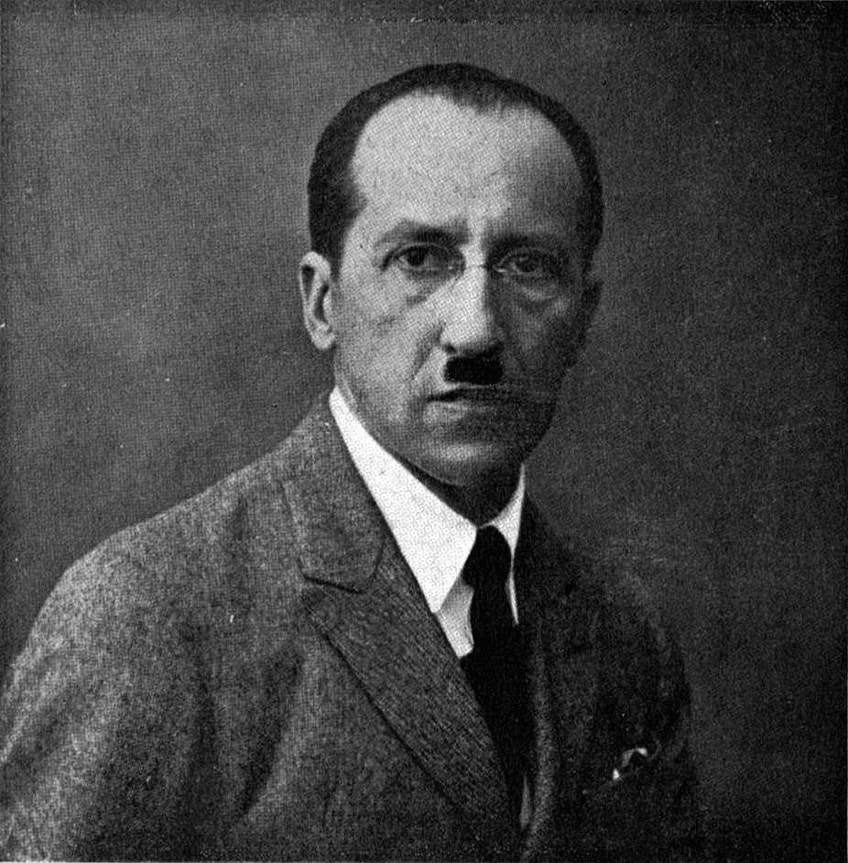
He then decided to simplify the art form even further by imposing certain limitations for its creation. He sought to strip away elements which he deemed purely decorative or based too much on objective reality and limited his palette to the basic primary colors of yellow, red, and blue, as well as the neutral grayscale tones as well as black and white.
It was in 1911, upon his arrival in Paris, that he experienced events that would act as the catalyst for the formation of his non-representational concepts and styles. It was here that he experimented with cubism and first began to move away from his former more naturalistic style. An example of these early experimentations is Composition in oval with color panes II (1914).
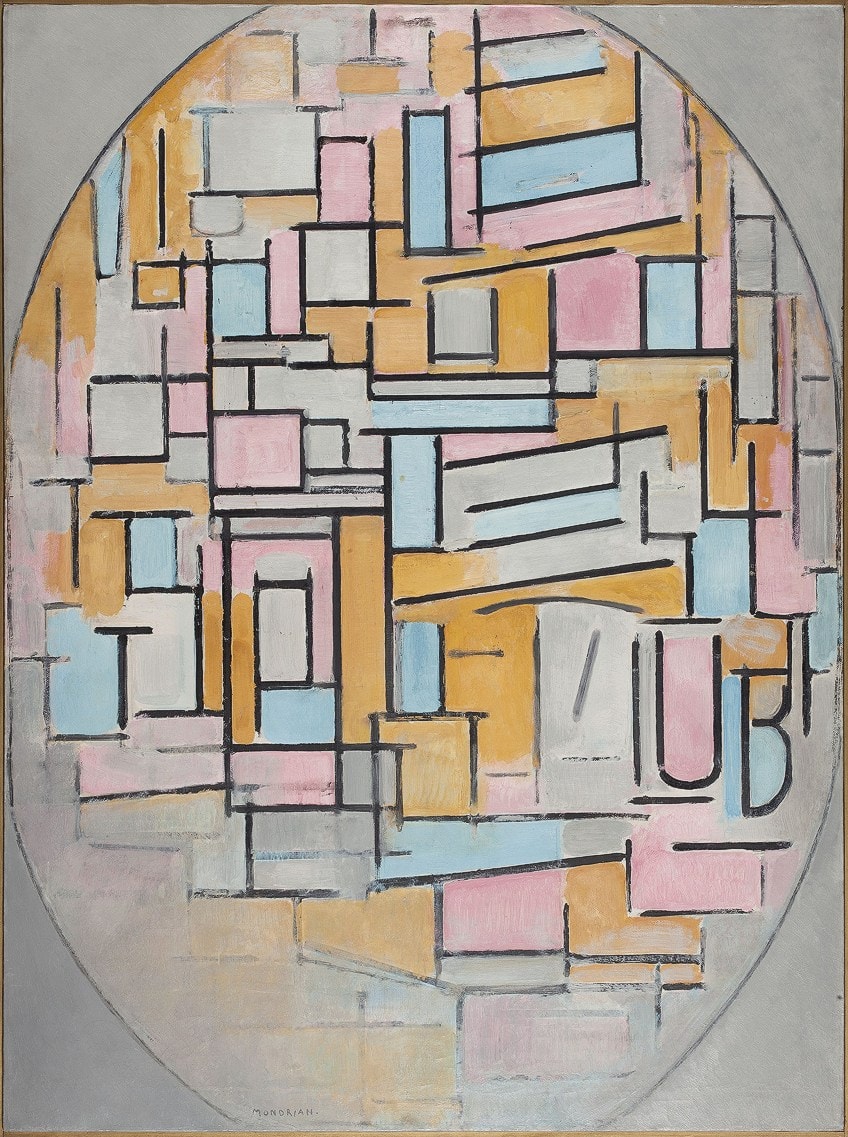
His artwork was highly idealistic and focused on the exploration of aesthetics and values that were universal. In 1914, he stated that art represented something that was greater than the real world and not directly related to it.
He felt that due to the realms of the physical world and the spirit existing on separate levels of observation, that it was no use referencing reality when trying to express spiritual values through art.
It is in the space above the physical world that abstraction occurs and he believed that unless art represented something higher than what we perceived around us, then it was a futile exercise. However, the essence of his output was said to be rooted in nature, even if it did not directly represent it physically.
Piet Mondrian took those ideas and published them in an essay that was divided over the first twelve editions of the art journal called De Stijl. The journal acted as a kind of manifesto for the movement of artists that was also known as De Stijl. Mondrian co-founded the group with a few other artists, most notably Theo van Doesburg.
Here, they developed a form of art that was essentially non-representational of anything found in the real world and called it Neoplasticism.
With this new pure art form, he hoped to create a visual language that would translate into universal beauty for the viewer. His artwork from this period can be exemplified by the artwork Composition in Colour A (1917).
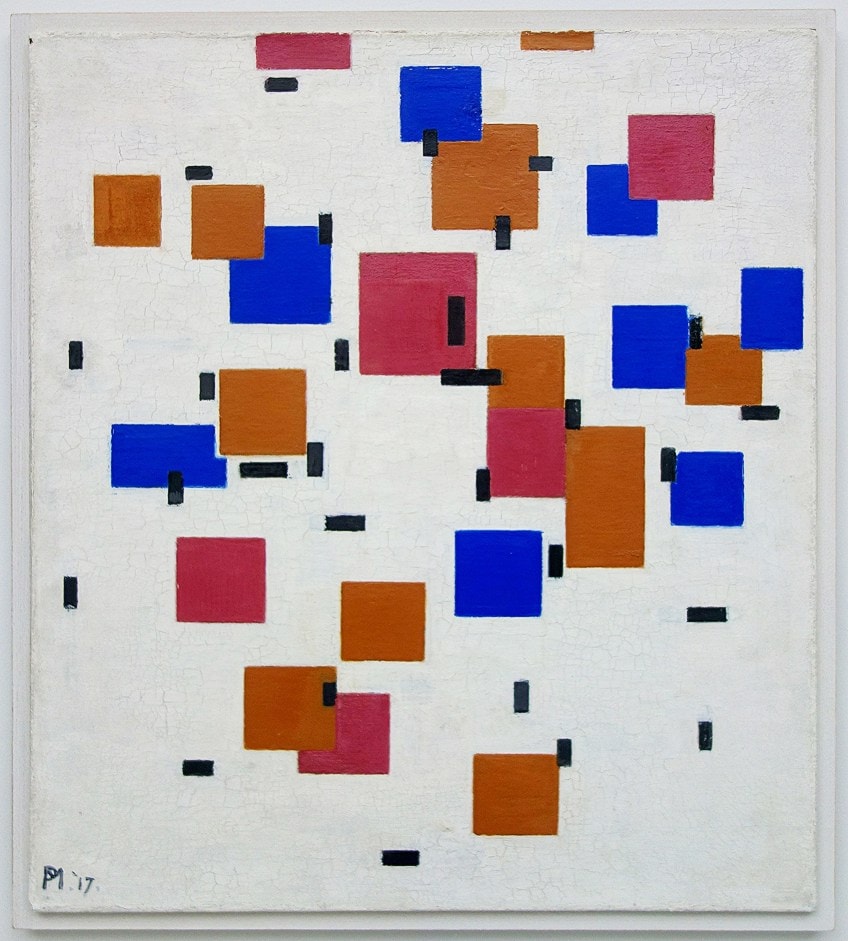
The Dutch artist’s output had a very substantial impact on the art of the 20th century. Not only did his concepts influence many movements and art styles such as Abstract Expressionism, Neoclassical art, Concrete Art, Elementalism, and Minimalism, but it also impacted other forms of art outside of the Plastic arts, such as fashion, architecture, and design.
His work is now considered an iconic simple of modern art, and despite not reaching great fame in his own lifetime, left behind an incredible legacy of work that is still felt to this day. He is most well-remembered for the style of art he created that can be typified by masterpieces such as Composition No. III with Red, Blue, Yellow, and Black (1929).

Theo van Doesburg (1883 – 1931)
| Nationality | Dutch |
| Date of Birth | 30 August 1883 |
| Lived In | Netherlands, Switzerland |
| Associated Movements | Neoplasticism, De Stijl, Elementarism |
The Dutch artist Theo van Doesburg was born in Utrecht in the Netherlands on the 30th of August 1883. After a brief time training to become an actor and singer, he went on to work as a storekeeper. He held his first exhibition in 1908, and his works were supported by articles he wrote for various magazine publications.
Theo van Doesburg initially displayed characteristics that were very similar to other artists from Amsterdam such as van Gogh, despite his belief that he was a modern artist. An example of his art from this period is the Self-portrait With Hat (1906).
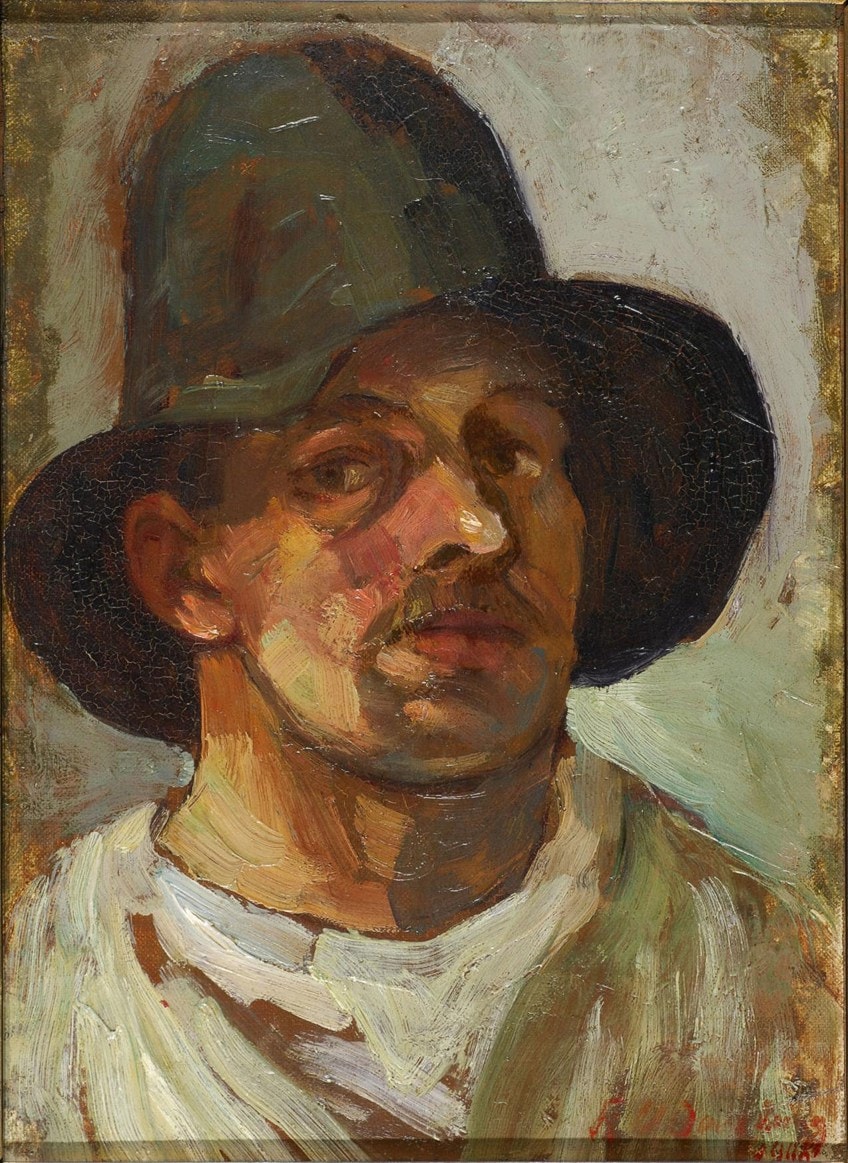
Once he read Rückblicke by Wassily Kandinsky, his view on his earlier work from 1903 to 1913 changed and he began to contemplate a higher level to the painting process that had its origins in the mind of the artist rather than reality itself and started to realize that the natural next step was one of abstraction.
Theo van Doesburg felt that much importance lay in the line which he considered a work of art itself and that it could not be played with when the all-important factor in art was still the representation of perceivable objects.
He viewed the blank canvas as an almost reverent object that could easily be spoiled with just one wrongly placed color or superfluous line.
By the time Theo van Doesburg had come across the art of Piet Mondrian during an exposition in 1915, Mondrian had already achieved a little attention for his work, being eight years older than van Doesburg. Mondrian’s paintings matched van Doesburg’s vision of how paintings should ideally look, being completely removed from reality. He made contact with Mondrian shortly after the exposition and along with several other artists, they founded the magazine and its associated movement, De Stijl. His artworks around this period are typified by pieces such as Composition VII (1917).
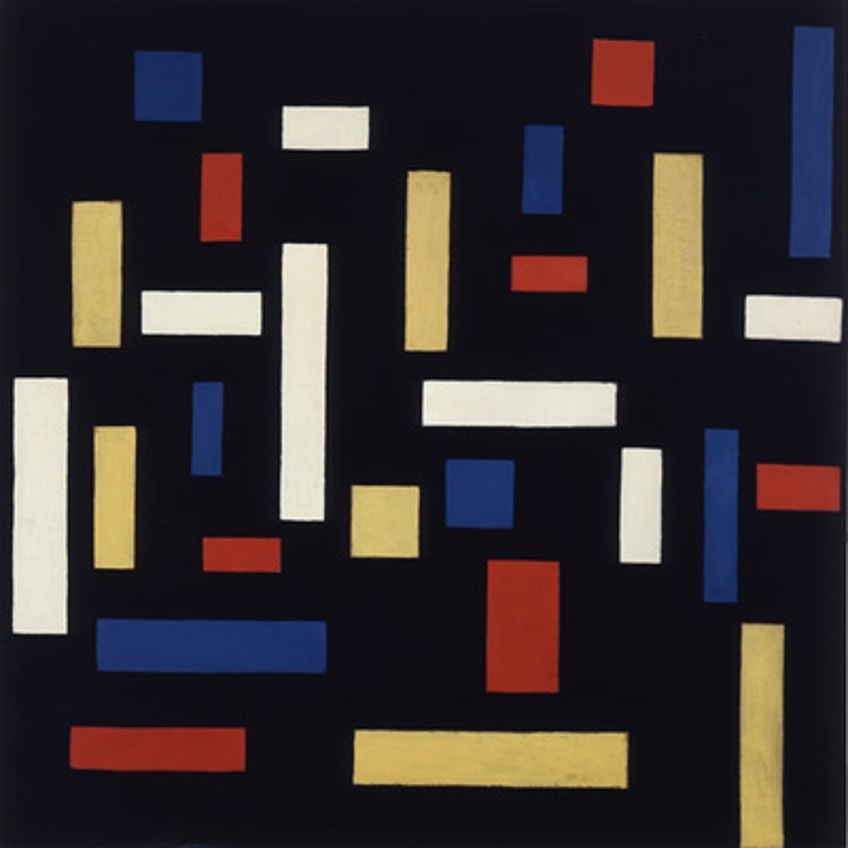
There were many members that represented the De Stijl movement, but van Doesburg greatly helped to promote it throughout Europe and was considered the group’s “ambassador”. To help spread the movement, he moved to Weimer in Germany in 1922, with the intention of impressing Walter Gropius, the principal member of the Bauhaus art school. Despite accepting many of the conceptual ideas of modern art movements, Gropius did not think that Doesburg should be entitled to become a Bauhaus master.
Van Doesburg responded to this by installing himself in the vicinity of the Bauhaus buildings and attracting students who were beginning to show an interest in the emerging movements such as Dadaism, Constructivism, and De Stijl.

When Mondrian moved to Paris in 1923, the two co-founders and most important figures of the emerging movement began to see more of each other. Their previous communication before this period was mostly through letters sent between the two, but since spending more time in each other’s company, their artistic differences became more apparent and served to be a bone of contention between the two that never was able to be resolved. Many believe it was due to Theo van Doesburg’s insistence on incorporating diagonal lines in his compositions, which was something that Mondrain was vehemently against, as he felt it went against the fundamental principles of the movement.
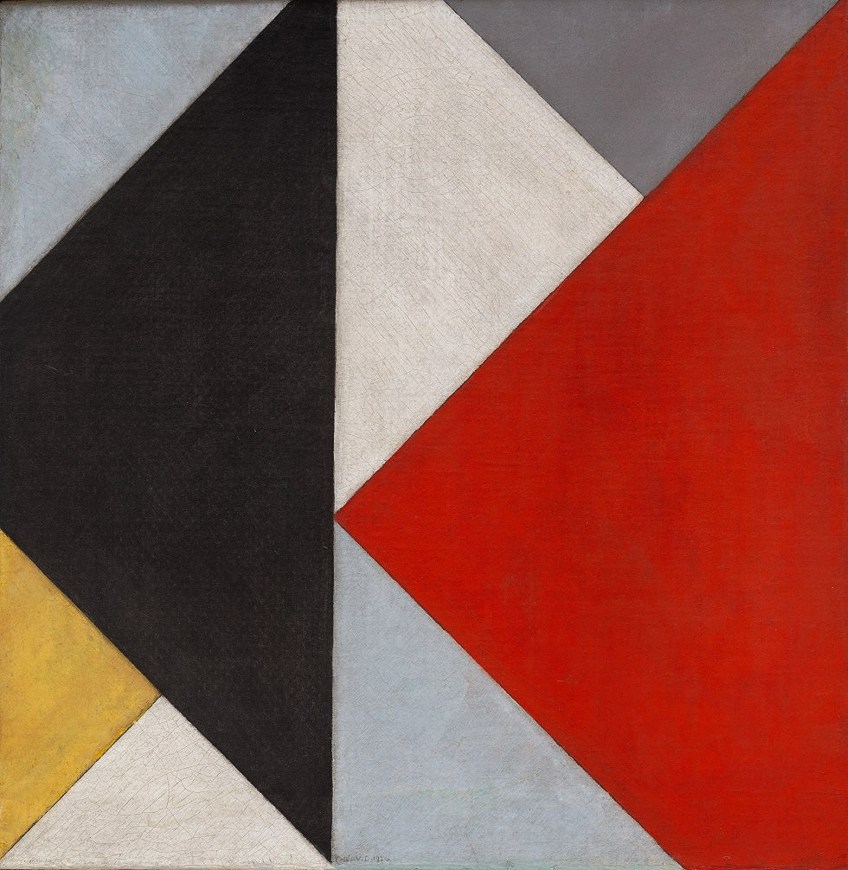
Other historians feel it was their discrepancies involving concepts of space and time that caused the final wedge between the two. Either way, Mandarin would soon leave the group and Theo van Doesburg would loosen some of the more creatively suppressive rules regarding the Neoplastic style, in the process creating a slightly diluted version called Elementarism. An example of Theo van Doesburg’s incorporation of diagonal lines can be observed in his artwork Counter Composition XIII (1929).
Bart van der Leck (1876 – 1958)
| Nationality | Dutch |
| Date of Birth | 26 November 1876 |
| Lived In | Netherlands |
| Associated Movements | Neoplasticism, De Stijl |
Bart van der Leck was born in the fourth largest city in the Netherlands, Utrecht, on the 26th of November 1876. He was a designer, painter as well as a ceramicist. Together with Piet Mondrian and Theo van Doesburg, he co-founded the art movement and journal known as De Stijl. His father was a house painter and his career began when he started to learn how to make stained glass while working in a shop in his hometown of Utrecht.
He would return to stained-glass again later in his career, examples of which can be found displayed in the Kröller-Müller Museum.

Upon meeting van Doesburg and Mondrian, they subsequently co-founded De Stijl and van der Leck’s work became increasingly abstract in style, as was the case with his peers in the movement. As with van Doesburg, van der Leck found himself too coming to creative loggerheads with Mondrian, whose restrictive definition of Neoplasticism was beginning to make the other artists feel creatively stifled.
Whereas Mondrian had not agreed with van Doesburg’s use of diagonal lines, he was equally not impressed with Bart van der Leck’s desire to create art that was representational of real-life objects, albeit objects that were still represented in an abstract style. An example of this would be the commissioned piece Composition 1916 no. 4 (1916) which was an abstracted representation of iron ore mines he had visited in North Africa and Spain.
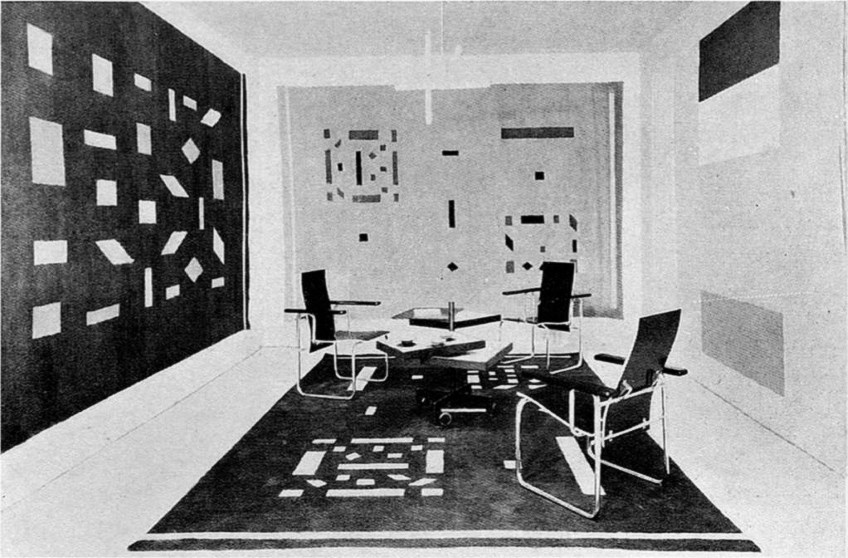
He was commissioned to decorate and create the interior design for the St.Hubertus Hunting Lodge in 1919. He was also hired to create the interior design as well as all the advertising, branding, and packaging for Metz & Co. store, an upmarket Dutch department store. He created a geometrically constructed rectilinear font for the packaging, and in 1941 a typeface was created based on this font for Flax, an avant-garde publication. A modern digital version of the typeface was revived and released by The Foundry in 1994. An artwork that exemplifies this slightly later period of his work is Still Life (Bowl With Apples) (1921).
It is said that Bart van der Leck often claimed that he was the original figure to embrace and create the art that became known as the avant-garde movement.
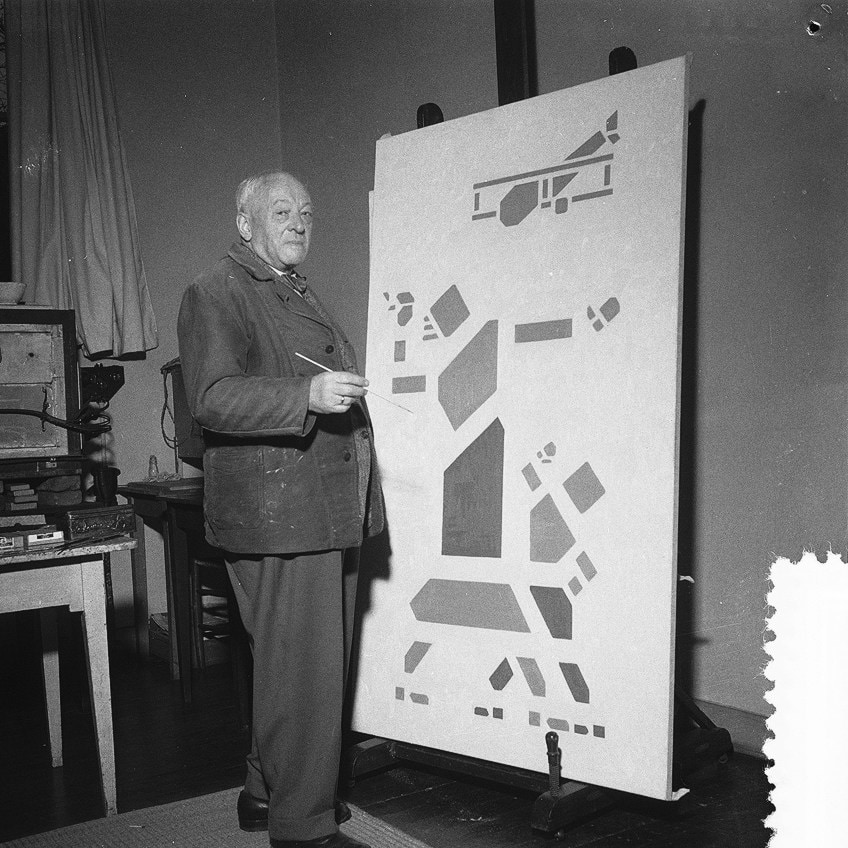
He often told a story of how van Doesburg had arrived with Mondrian at his place one day, apparently the first occasion that the two would meet, and upon seeing one of van der Leck’s work-in-progress abstract paintings on the easel, shouted out that if what he was seeing was the future of art, then he would rather hang himself.
Yet despite all of van Doesburg’s proclamations of horror and disgust, he was himself painting in exactly the same manner shortly afterward.
Bart van der Leck would accuse Theo van Doesburg of being an uncreative thief of ideas. An example of his work from the late 1950s is the Composition with One Grey Stripe (1958).
Vilmos Huszár (1884 – 1960)
| Nationality | Hungarian |
| Date of Birth | 5 January 1884 |
| Lived In | Hungary, Netherlands |
| Associated Movements | De Stijl, Neoplasticism |
The Hungarian designer and painter Vilmos Huszár was born in Budapest in Hungary on the 5th of January 1884. In 1905 he settled in the town of Voorburg after emigrating to the Netherlands. At that point, he was still largely influenced by art movements such as Futurism and Cubism.
It was in the Netherlands that he would meet Theo van Doesburg and piet Mondrian, with whom he co-founded the De Stijl movement in 1917.
Huszár also co-founded the associated journal publication of the movement and the cover of the first issue was his design. An example of his work from this period is the Composition with Female Figure (1918).
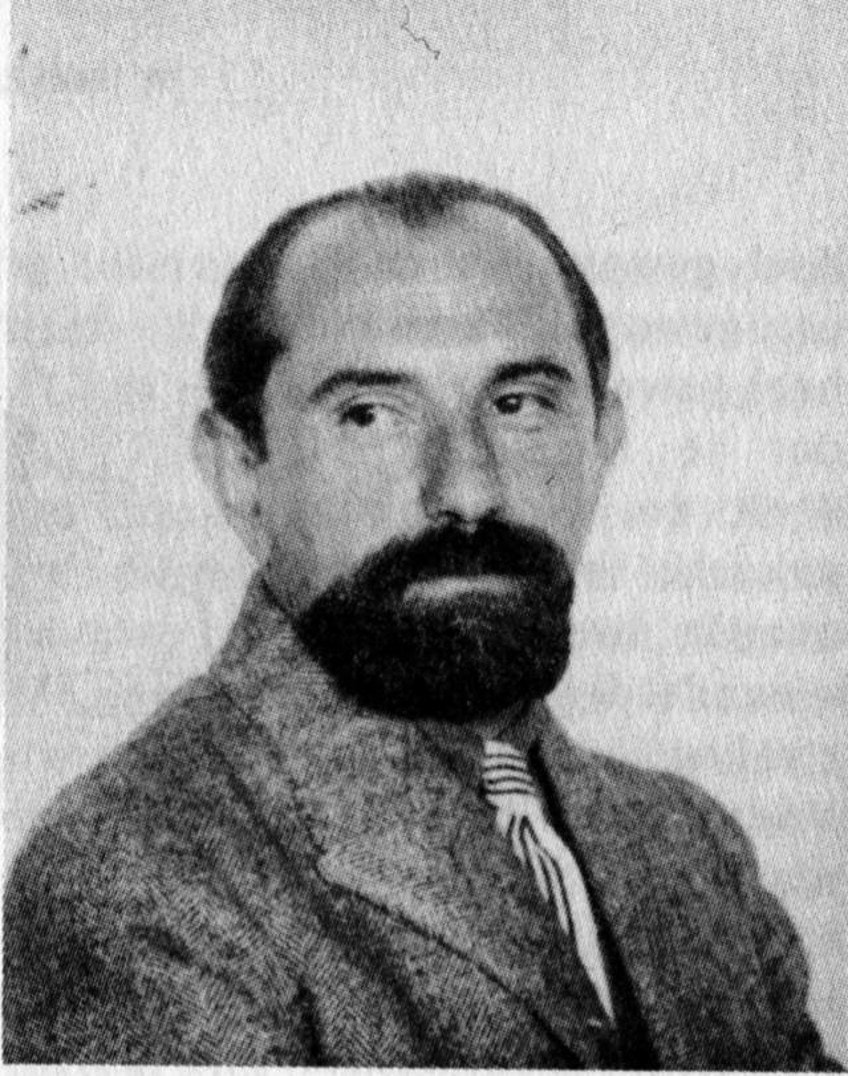
He was also a designer and he was responsible for designing the color schemes for the bedroom of the Bruynzeel House situated in Voorburg in 1918. He then created furniture designs, collaborating with Dutch industrial designer Piet Zwart.
In 1923, he left the De Stijl group and worked on the interior design for the Greater Berlin Art exhibition in collaboration with Gerrit Rietveld. Huszár focused on painting and graphic design from 1925 onwards. An example of his later work from this period is Spa (Rooftops in Spa, Belgium) (1926).

He was responsible for the complete design identity of a brand of cigarettes known as “Miss Blanche Virginia” which included the design work for the point of sales display, advertising, and product packaging. Unfortunately, many of his works are only known from prints in the De Stijl publication and their whereabouts are unknown. He passed away in 1960 in the Dutch town of Harderwijk. Peter Lozsy, a Hungarian collector, discovered the only known sculpture of Vilmos Huszár in 2021.
Today we have learned about the movement known as Neoplasticism. We have seen how it grew from a desire to escape the previous attempts at art to portray reality and instead Neoplasticism artists stripped away everything that they considered superfluous. Their aim was to create something that surpassed the plastic arts and represented the deepest aspects of the spirit through only the essential elements of art.
https://www.youtube.com/watch?v=GezllB9B4zA
Frequently Asked Questions
What Is Neoplasticism Art?
Neoplasticism art originated from a movement known as De Stijl. It was created by a group of artists that wanted to expand the reach of the growing non-representational style. They wanted to use essential elements such as primary colors and straight vertical and horizontal lines to create artworks that evoked something deeper and higher within the viewer.
What Are the Characteristics of Neoplasticism Art?
Circles, diagonals, and curves were not allowed to be used, only vertical and horizontal lines. No natural colors were allowed, only primary colors and neutral tones. Balance was achieved in the composition by the use of geometrical motifs and the spacing of colors.
Isabella studied at the University of Cape Town in South Africa and graduated with a Bachelor of Arts majoring in English Literature & Language and Psychology. Throughout her undergraduate years, she took Art History as an additional subject and absolutely loved it. Building on from her art history knowledge that began in high school, art has always been a particular area of fascination for her. From learning about artworks previously unknown to her, or sharpening her existing understanding of specific works, the ability to continue learning within this interesting sphere excites her greatly.
Her focal points of interest in art history encompass profiling specific artists and art movements, as it is these areas where she is able to really dig deep into the rich narrative of the art world. Additionally, she particularly enjoys exploring the different artistic styles of the 20th century, as well as the important impact that female artists have had on the development of art history.
Learn more about Isabella Meyer and the Art in Context Team.
Cite this Article
Isabella, Meyer, “Neoplasticism – An Essential Look at Neoplasticism Art.” Art in Context. December 9, 2021. URL: https://artincontext.org/neoplasticism/
Meyer, I. (2021, 9 December). Neoplasticism – An Essential Look at Neoplasticism Art. Art in Context. https://artincontext.org/neoplasticism/
Meyer, Isabella. “Neoplasticism – An Essential Look at Neoplasticism Art.” Art in Context, December 9, 2021. https://artincontext.org/neoplasticism/.


